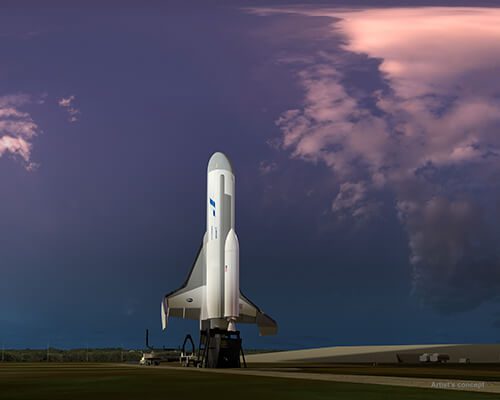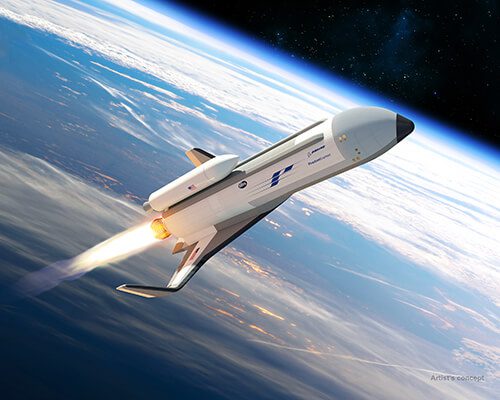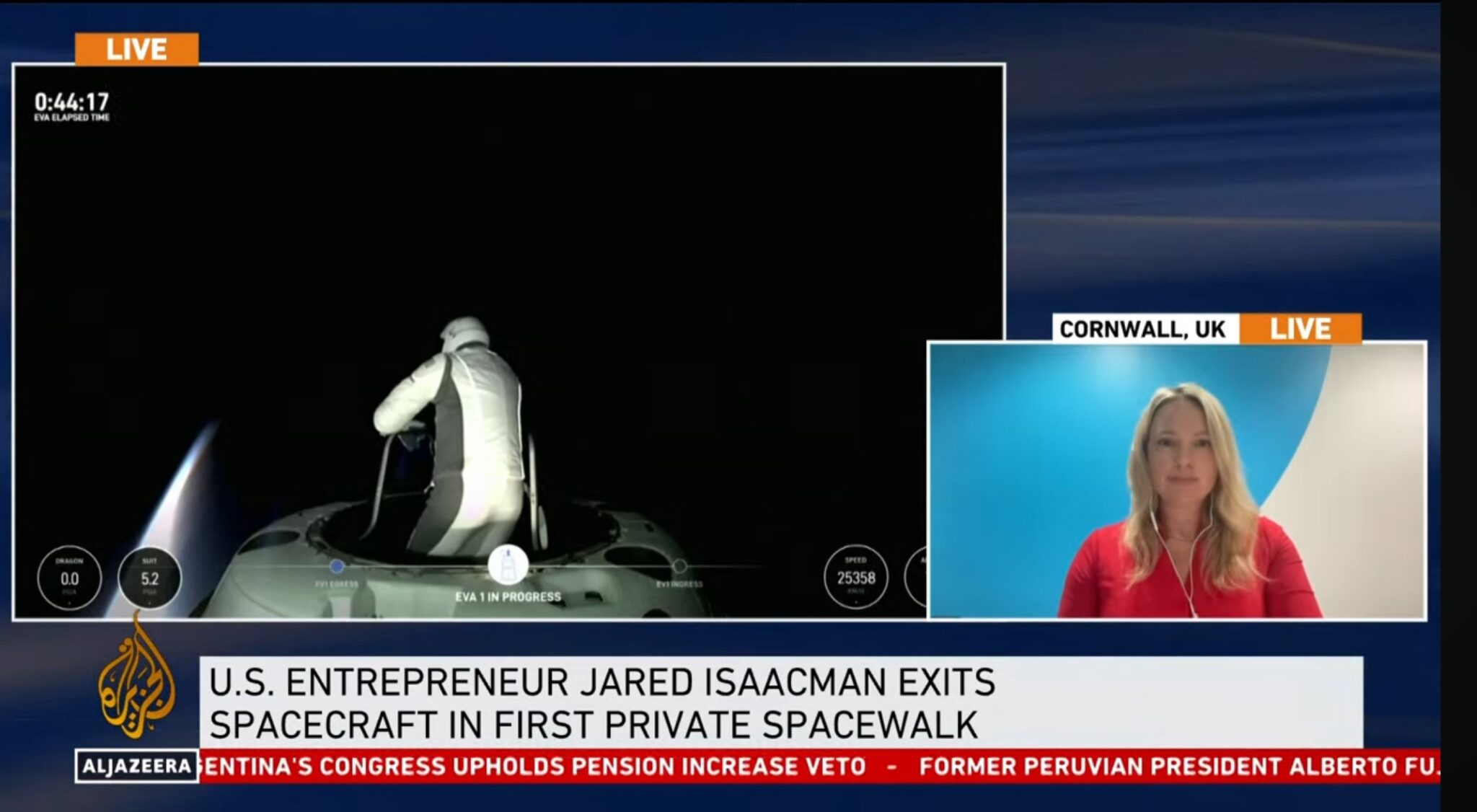The U.S. Defense Advanced Research Projects Agency (DARPA) has selected Boeing to build its new part-reusable experimental spaceplane (XS-1). Called the Phantom Express, it will act as a first stage carrying an expendable upper stage on top that is designed to deliver small satellites of up to 1,361 kg into low Earth orbit (LEO) and with high launch responsiveness.
The liquid hydrogen/liquid oxygen (LOx) powered main propulsion system is based on the legacy reusable space shuttle main engines (SSME) built by Aerojet Rocketdyne. The derivative engine has been named the AR-22. After its vertical launch, the plan is for the Phantom Express to fly to the edge of space and then release its dorsally carried upper stage to inject the satellite payload into orbit. The spaceplane would then re-enter and land on a runway to be rapidly prepared for its next mission in an airline-style operation.
The airframe is being built using third-generation thermal protection to allow it to make multiple launches and re-entries safely, with minimal maintenance. In the demonstration flight programme, the two-stage vehicle will make 10 launches and re-entries in 10 days.

The XS-1 Phantom Express and attached expendable upper stage are ready for launch in this artist’s impression. Courtesy: Boeing
For the XS-1 programme, Aerojet Rocketdyne is providing two engines with legacy shuttle flight experience to demonstrate reusability, a wide operating range and rapid turnarounds. These engines, designated as AR-22s, will be assembled from parts that remained in both Aerojet Rocketdyne and NASA inventories from early versions of the SSME engines. Assembly and ground testing will take place at NASA’s Stennis Space Center in Mississippi.
Comment by David Todd: This is a laudable exercise and one that should have taken place decades ago. One question remains, however: Won’t NASA’s SLS need every spare SSME engine part for its RS-25D/E main engine programme?

The XS-1 Phantom Express first stage carries its second stage to the edge of space in this illustration. Courtesy: Boeing








